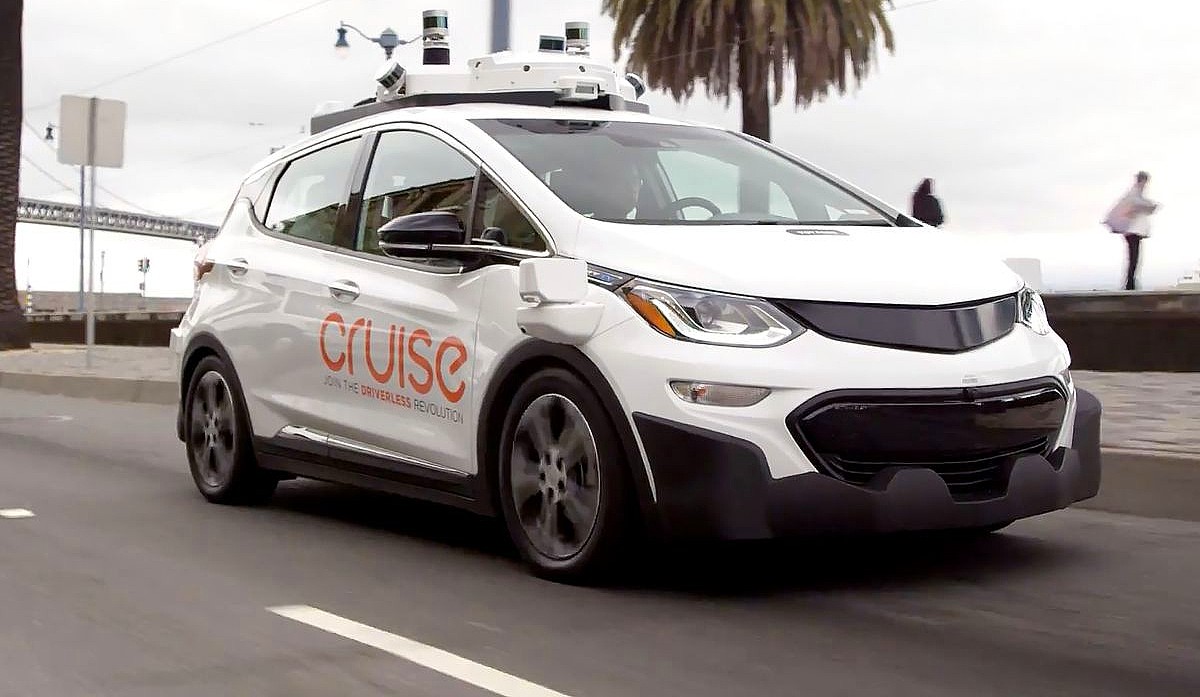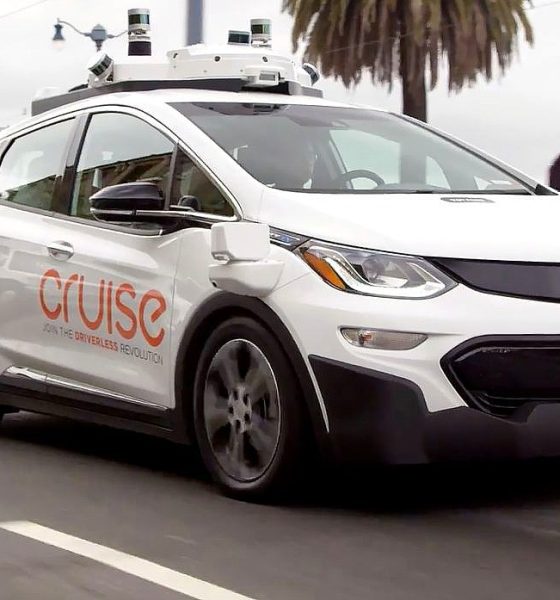

News
GM’s Mary Barra stands by Cruise’s cautious strategy amid Tesla’s full self-driving push
A recent interview with GM CEO Mary Barra from Axios has provided some of the executive’s insights about full self-driving solutions, competition from Tesla, and the Detroit-based company’s strategy for the deployment of its autonomous driving tech. Barra proved conservative, emphasizing that GM will not deploy its full self-driving suite until it is safer than a human driver.
The emergence of full self-driving technologies is all but inevitable at this point, with companies such as Waymo and electric car makers such as Tesla actively pursuing the development and refinement of autonomous driving solutions. Among the industry’s players, Tesla appears to have the momentum, as the company has the largest amount of real-world driving data gathered from hundreds of thousands of vehicles currently on the road. Augmented by the rollout of Tesla’s custom self-driving computer, Elon Musk has been optimistic with the company’s full self-driving rollout plans. Musk has stated that the company’s FSD suite will be “feature complete” by the end of 2019, and that it will have around a million vehicles capable of being used as autonomous “robotaxis” next year.
When asked by the publication about the competition from Tesla and if it is essential for a company to be the first to deploy an autonomous driving system, the GM CEO response was cautious. “We want to be safe. And so that’s what’s motivating us. We understand this is life-changing technology,” Barra said, later adding that “there are so many different ways that we can improve our customers’ lives by having this technology, not only from a safety, but from a productivity (standpoint), what they can do. But what they do, we want to make sure they do safely.”
Barra’s rather conservative statements in her recent interview feature a rather different tone than her previous forecasts for GM’s full self-driving solutions. Speaking at the Dealbook conference last November, Barra stated that GM was on schedule to deploy its full self-driving technology in 2019. “We’re on track, with our rate of learning, to be able to do that next year,” she said. During her segment, Barra noted that GM had a strategy to show that its vehicles are safer than human drivers. She also mentioned that GM Cruise’s autonomous cars were already capable of running safely at around 30 mph, though the service was limited to a small area.
GM eventually softened its stance on its 2019 target release. In a statement to The Detroit News in April, GM noted that Cruise’s driverless taxi service would be “gated by safety” when it goes get deployed. A report from The Information published this June also suggested that in April, GM Cruise’s full self-driving technology experienced a massive failure in the presence of Honda Motor CEO Takahiro Hachigo, a major investor in the company. During the demo, the vehicle’s autonomous driving system reportedly stopped, forcing the car’s backup driver to take control. The vehicle then refused to reactivate, forcing the Honda CEO to wait until he was picked up by an operational GM Cruise autonomous car.
Amidst these reports, Barra did not commit to a launch date for the company’s driverless vehicle service. Nevertheless, in her Axios interview, Barra stated that she does not regret the company’s aggressive 2019 target. “It’s a rallying cry. And I think it’s been motivational,” she said.
While GM Cruise might have less real-world miles compared to Tesla and Waymo, the self-driving unit of the Detroit-based carmaker has attracted a notable number of investors nonetheless. In its latest fundraising round alone, GM Cruise was valued at $19 billion on its own. That’s quite impressive, considering the company’s progress with its technology so far. Tesla, on the other hand, is valued at $39 billion as of writing, and that covers the company’s electric vehicle and energy storage business, as well as its full self-driving technology. This was addressed in a previous note from Morgan Stanley analyst Adam Jonas, who noted that TSLA investors are “undervaluing” the company’s autonomous driving systems. “We believe investors underappreciate/undervalue Tesla’s Autonomy business. Many investors to whom we speak do not explicitly include Tesla’s Autonomy business in their valuation of the company,” Jonas said.

News
Tesla FSD fleet is nearing 7 billion total miles, including 2.5 billion city miles
As can be seen on Tesla’s official FSD webpage, vehicles equipped with the system have now navigated over 6.99 billion miles.

Tesla’s Full Self-Driving (Supervised) fleet is closing in on almost 7 billion total miles driven, as per data posted by the company on its official FSD webpage.
These figures hint at the massive scale of data fueling Tesla’s rapid FSD improvements, which have been quite notable as of late.
FSD mileage milestones
As can be seen on Tesla’s official FSD webpage, vehicles equipped with the system have now navigated over 6.99 billion miles. Tesla owner and avid FSD tester Whole Mars Catalog also shared a screenshot indicating that from the nearly 7 billion miles traveled by the FSD fleet, more than 2.5 billion miles were driven inside cities.
City miles are particularly valuable for complex urban scenarios like unprotected turns, pedestrian interactions, and traffic lights. This is also the difference-maker for FSD, as only complex solutions, such as Waymo’s self-driving taxis, operate similarly on inner-city streets. And even then, incidents such as the San Francisco blackouts have proven challenging for sensor-rich vehicles like Waymos.
Tesla’s data edge
Tesla has a number of advantages in the autonomous vehicle sector, one of which is the size of its fleet and the number of vehicles training FSD on real-world roads. Tesla’s nearly 7 billion FSD miles then allow the company to roll out updates that make its vehicles behave like they are being driven by experienced drivers, even if they are operating on their own.
So notable are Tesla’s improvements to FSD that NVIDIA Director of Robotics Jim Fan, after experiencing FSD v14, noted that the system is the first AI that passes what he described as a “Physical Turing Test.”
“Despite knowing exactly how robot learning works, I still find it magical watching the steering wheel turn by itself. First it feels surreal, next it becomes routine. Then, like the smartphone, taking it away actively hurts. This is how humanity gets rewired and glued to god-like technologies,” Fan wrote in a post on X.
News
Tesla starts showing how FSD will change lives in Europe
Local officials tested the system on narrow country roads and were impressed by FSD’s smooth, human-like driving, with some calling the service a game-changer for everyday life in areas that are far from urban centers.

Tesla has launched Europe’s first public shuttle service using Full Self-Driving (Supervised) in the rural Eifelkreis Bitburg-Prüm region of Germany, demonstrating how the technology can restore independence and mobility for people who struggle with limited transport options.
Local officials tested the system on narrow country roads and were impressed by FSD’s smooth, human-like driving, with some calling the service a game-changer for everyday life in areas that are far from urban centers.
Officials see real impact on rural residents
Arzfeld Mayor Johannes Kuhl and District Administrator Andreas Kruppert personally tested the Tesla shuttle service. This allowed them to see just how well FSD navigated winding lanes and rural roads confidently. Kruppert said, “Autonomous driving sounds like science fiction to many, but we simply see here that it works totally well in rural regions too.” Kuhl, for his part, also noted that FSD “feels like a very experienced driver.”
The pilot complements the area’s “Citizen Bus” program, which provides on-demand rides for elderly residents who can no longer drive themselves. Tesla Europe shared a video of a demonstration of the service, highlighting how FSD gives people their freedom back, even in places where public transport is not as prevalent.
What the Ministry for Economic Affairs and Transport says
Rhineland-Palatinate’s Minister Daniela Schmitt supported the project, praising the collaboration that made this “first of its kind in Europe” possible. As per the ministry, the rural rollout for the service shows FSD’s potential beyond major cities, and it delivers tangible benefits like grocery runs, doctor visits, and social connections for isolated residents.
“Reliable and flexible mobility is especially vital in rural areas. With the launch of a shuttle service using self-driving vehicles (FSD supervised) by Tesla in the Eifelkreis Bitburg-Prüm, an innovative pilot project is now getting underway that complements local community bus services. It is the first project of its kind in Europe.
“The result is a real gain for rural mobility: greater accessibility, more flexibility and tangible benefits for everyday life. A strong signal for innovation, cooperation and future-oriented mobility beyond urban centers,” the ministry wrote in a LinkedIn post.
News
Tesla China quietly posts Robotaxi-related job listing
Tesla China is currently seeking a Low Voltage Electrical Engineer to work on circuit board design for the company’s autonomous vehicles.

Tesla has posted a new job listing in Shanghai explicitly tied to its Robotaxi program, fueling speculation that the company is preparing to launch its dedicated autonomous ride-hailing service in China.
As noted in the listing, Tesla China is currently seeking a Low Voltage Electrical Engineer to work on circuit board design for the company’s autonomous vehicles.
Robotaxi-specific role
The listing, which was shared on social media platform X by industry watcher @tslaming, suggested that Tesla China is looking to fill the role urgently. The job listing itself specifically mentions that the person hired for the role will be working on the Low Voltage Hardware team, which would design the circuit boards that would serve as the nervous system of the Robotaxi.
Key tasks for the role, as indicated in the job listing, include collaboration with PCB layout, firmware, mechanical, program management, and validation teams, among other responsibilities. The role is based in Shanghai.
China Robotaxi launch
China represents a massive potential market for robotaxis, with its dense urban centers and supportive policies in select cities. Tesla has limited permission to roll out FSD in the country, though despite this, its vehicles have been hailed as among the best in the market when it comes to autonomous features. So far, at least, it appears that China supports Tesla’s FSD and Robotaxi rollout.
This was hinted at in November, when Tesla brought the Cybercab to the 8th China International Import Expo (CIIE) in Shanghai, marking the first time that the autonomous two-seater was brought to the Asia-Pacific region. The vehicle, despite not having a release date in China, received a significant amount of interest among the event’s attendees.








